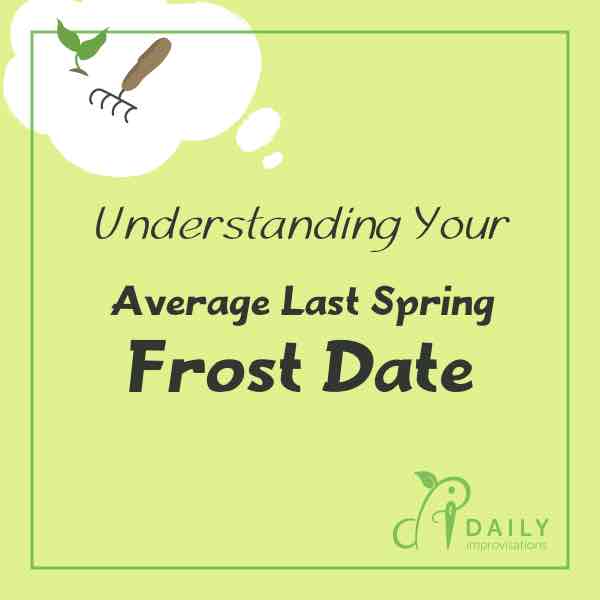Why Your Last Average Frost Date is Important
If you live where it freezes anytime during the winter, you need to understand your regions average last frost date in the spring. Knowing when this is and what it means will help you a lot with your garden planning. It will also help you sort through spring planting advice you may get.
First, there is only an average given for this date because it varies! It is not like a holiday that happens on a certain day. It is more like wondering if it will actually snow on Christmas day. Sometimes it does and sometimes it doesn’t.
Here in southwestern Idaho, the average last frost date in the spring is close to May 15. It could be sooner or it could be later. The main thing is to know that it could very well be later. If there are any frost sensitive plants out in the garden before the late end of the range (usually the beginning of June), then a gardener should be diligent to watch the nighttime lows.
What You Need to be Doing if there Might Still be a Frost
I always protect my frost sensitive plants if the predicted low is less than 40°F. Fortunately, I have never seen the predicted low vary by more than 8-9 degrees.
Protecting the plants means covering them with a plastic container, bucket, or fabric draped on a support if they are already planted out in the garden, as I go into detail in Useful Pots for Late Spring Frost Protection. If the plants are still in pots, it is a matter of either bringing them all into my greenhouse or putting them on shelves next to the house and covering that.
As I discuss some in the video, one of the reasons warm weather plants sometimes get planted out early is because they get too large for their pot. It is a choice between the work of repotting them and watching the weather. Since there are usually a limited number of low-temperature nights, planting out is frequently the most practical.
Keeping track of frost sensitive plants that are out in the garden might be a challenge if there are very many or they are dispersed. It is also harder to re-locate them all if you wait until it is dark outside…
The Difference Between Plants and Seeds in Cold Soil
While frost protection keeps tender plants from dying, planting them out early doesn’t necessarily give them a head start on the season. Every type of plant has optimal growing conditions and warm weather plants simply don’t thrive until it is reliably and regularly warm. Planting them out may satisfy our desire to garden, but it is frequently not to our advantage. Exactly when a plant really takes off, and then produces, depends more on the specific variety as well as the overall weather and temperatures.
Seeds are even less responsive to attempts to disregard temperatures. Many warm weather plants prefer direct seeding, are most convenient to plant directly outside, and simply won’t germinate well if the soil temperature is cold or wet.
Remember that the soil temperature is less variable than the air temperature. The earth will stay cooler until the air temperatures have been higher long enough to draw some of the chill from the soil.
So What Can You Plant When?
Southwestern Idaho basically has 2 different growing seasons, as I discuss in this Quick Guide to Spring Gardening in Southwest Idaho. If you live in another region you will have different factors to consider.
Some places have only a short season for everything, but don’t have the same heat in the summer, so can grow cool weather crops alongside warm weather crops. Some places have extended growing seasons, but have to deal with problems caused by humidity. Many experienced gardeners in your area will be happy to pass along what they have learned about dealing with their specific climate.


Leave a Reply